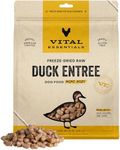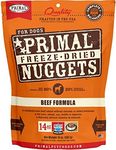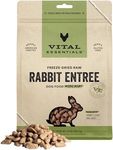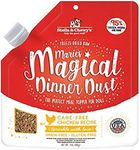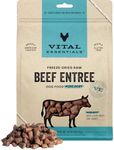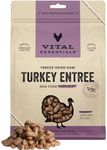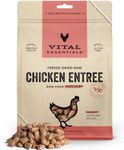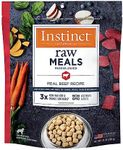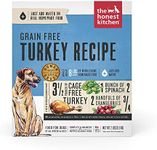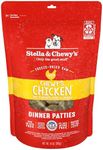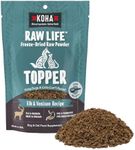Buying Guide for the Best Freeze-Dried Dog Foods
Choosing the right freeze-dried dog food for your furry friend can be a bit overwhelming, but it's important to ensure they get the best nutrition possible. Freeze-dried dog food is a great option because it retains most of the nutrients found in fresh food while being convenient and easy to store. When selecting freeze-dried dog food, consider your dog's specific needs, preferences, and any dietary restrictions they may have. Here are some key specifications to look at and how to navigate them.IngredientsIngredients are the most crucial aspect of any dog food. They determine the nutritional value and overall health benefits for your dog. Look for high-quality, natural ingredients such as real meat, vegetables, and fruits. Avoid foods with artificial additives, fillers, and by-products. If your dog has allergies or sensitivities, make sure to choose a formula that excludes those specific ingredients. The best choice is one that aligns with your dog's dietary needs and preferences.
Protein ContentProtein is essential for your dog's growth, muscle development, and overall health. Freeze-dried dog foods typically have high protein content due to the concentration process. Look for foods with a protein content that matches your dog's activity level and age. Puppies and active dogs require higher protein levels, while older or less active dogs may need less. Choose a protein source that your dog enjoys and can digest easily.
Fat ContentFat is a vital energy source for dogs and helps maintain healthy skin and coat. The fat content in freeze-dried dog food can vary, so it's important to find a balance that suits your dog's lifestyle. Active dogs may benefit from higher fat content, while less active dogs or those prone to weight gain should have lower fat levels. Always check the type of fat used, preferring natural sources like fish oil or chicken fat.
Carbohydrate ContentCarbohydrates provide energy and are necessary for a balanced diet. Freeze-dried dog foods often have lower carbohydrate levels compared to kibble. Look for foods with healthy carbohydrate sources like sweet potatoes, peas, or other vegetables. Dogs with high energy levels may need more carbs, while those with lower activity levels should have fewer. Ensure the carbs are from natural sources and not fillers.
Caloric DensityCaloric density refers to the number of calories in a given amount of food. This is important to ensure your dog gets the right amount of energy without overeating. Active dogs or those with higher energy needs will require food with higher caloric density, while less active dogs or those needing weight management should have lower caloric density. Adjust the serving size based on your dog's weight and activity level.
Brand ReputationThe reputation of the brand can give you confidence in the quality and safety of the food. Look for brands with positive reviews, transparent ingredient sourcing, and good manufacturing practices. Research the brand's history and any recalls to ensure reliability. A reputable brand is more likely to provide consistent quality and nutritional value for your dog.
Packaging and StorageFreeze-dried dog food should be packaged in a way that maintains its freshness and nutritional value. Look for airtight, resealable packaging that protects the food from moisture and contaminants. Consider the storage requirements and shelf life, ensuring it fits your lifestyle and storage capabilities. Proper packaging and storage will keep the food safe and nutritious for your dog.
